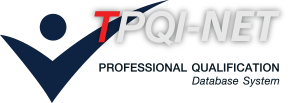หน่วยสมรรถนะ
Inspect, test and troubleshoot basic aircraft electrical systems and components.
สาขาวิชาชีพการบิน
รายละเอียดหน่วยสมรรถนะ
| 1. รหัสหน่วยสมรรถนะ | AVT-DTSB-258A |
| 2. ชื่อหน่วยสมรรถนะ | Inspect, test and troubleshoot basic aircraft electrical systems and components. |
| 3. ทบทวนครั้งที่ | / |
| 4. สร้างใหม่ |
|
ปรับปรุง |
|
| 5. สำหรับชื่ออาชีพและรหัสอาชีพ (Occupational Classification) | |
|
7232 Aircraft engine mechanics and fitters |
|
| 6. คำอธิบายหน่วยสมรรถนะ (Description of Unit of Competency) | |
| This unit of competency requires the application of manual skills and the use of the knowledge system / components and equipment applicable to inspect, test and troubleshoot systems direct current (DC) electric aircraft and aircraft components rotary wing test fixed and having only DC electrical systems during scheduled or unscheduled maintenance. The work can be done individually or as part of a team. | |
| 7. สำหรับระดับคุณวุฒิ |
| 1 | 2 | 3 | 4 | 5 | 6 | 7 | 8 |
|---|---|---|---|---|---|---|---|
| 8. กลุ่มอาชีพ (Sector) | |
| 10 Aircraft Mechanics | |
| 9. ชื่ออาชีพและรหัสอาชีพอื่นที่หน่วยสมรรถนะนี้สามารถใช้ได้ (ถ้ามี) | |
| 103 Aircraft Maintenance: Avionic | |
| 10. ข้อกำหนดหรือกฎระเบียบที่เกี่ยวข้อง (Licensing or Regulation Related) (ถ้ามี) | |
| ICAO Doc 7192 / EASA Part 66 | |
| 11. สมรรถนะย่อยและเกณฑ์การปฏิบัติงาน (Elements and Performance Criteria) |
| หน่วยสมรรถนะย่อย (EOC) | เกณฑ์ในการปฏิบัติงาน (Performance Criteria) | รหัส PC (ตามเล่มมาตรฐาน) |
รหัส PC (จากระบบ) |
|---|---|---|---|
| 103401.01 Inspect DC aircraft electrical systems and components. |
103401.01.01 Documentation for maintenance and modification status, including reports of system defects if any, are used to identify specific inspection requirements. Isolation tags are checked and aircraft configured for safe system inspection and operation in accordance with the applicable maintenance manual. |
103401.01.01 | 199757 |
| 103401.01 Inspect DC aircraft electrical systems and components. |
103401.01.02 DC electrical system visually or physically checked for external signs of defects in accordance with the maintenance manual applicable to observe all safety requirements (WHS) and the relevant occupational health, and defects are correctly identified and reported. |
103401.01.02 | 199758 |
| 103401.02 Test/adjust DC aircraft electrical systems. |
103401.02.01 Aircraft and system are prepared in accordance with applicable maintenance manual for the application of power system operation. |
103401.02.01 | 199763 |
| 103401.02 Test/adjust DC aircraft electrical systems. |
103401.02.02 Electrical system is functionally tested in accordance with maintenance manual for evidence of serviceability or malfunction , and system calibration or adjustments are performed in accordance with maintenance manual, as appropriate. |
103401.02.02 | 199764 |
| 103401.03 Troubleshoot DC aircraft electrical systems. |
103401.03.01 Available information from maintenance documentation and inspection and test results is used, where necessary, to assist in fault determination. Maintenance manual fault diagnosis guides and logic processes are used to ensure efficient and accurate troubleshooting to line replacement level. |
103401.03.01 | 199767 |
| 103401.03 Troubleshoot DC aircraft electrical systems. |
103401.03.02 Specialist advice is obtained, where required, to assist with the troubleshooting process. system failures are and the causes of faults are clearly identified and recorded properly in the maintenance documentation, where necessary and in accordance with standard procedures for companies, and rectification requirements are determined. |
103401.03.02 | 199768 |
| 12. ความรู้และทักษะก่อนหน้าที่จำเป็น (Pre-requisite Skill & Knowledge) | |
|
N/A |
|
| 13. ทักษะและความรู้ที่ต้องการ (Required Skills and Knowledge) | |
|
(ก) ความต้องการด้านทักษะ See Appendix A (ข) ความต้องการด้านความรู้ See Appendix A |
|
| 14. หลักฐานที่ต้องการ (Evidence Guide) | |
|
(a) Performance Evidence Aapplying relevant WHS practices, including those relating to gas turbine engine high energy ignition units. (b) Knowledge Evidence |
|
| 15. ขอบเขต (Range Statement) | |||||||
|
(a) Recommendation
(b) Description |
|||||||
| 16. หน่วยสมรรถนะร่วม (ถ้ามี) | |
| N/A | |
| 17. อุตสาหกรรมร่วม/กลุ่มอาชีพร่วม (ถ้ามี) | |
| N/A | |
| 18. รายละเอียดกระบวนการและวิธีการประเมิน (Assessment Description and Procedure) | |
|
The assessment are based on combination of paper exams, interviewing, and practical demonstrations depending on the assessors’ judgement.Competition should be assessed in the workplace or place of work simulated using tools and equipment specified in the maintenance manuals. It is also expected that the tools of general and special purpose test equipment and ground support would be used where appropriate. |
|
